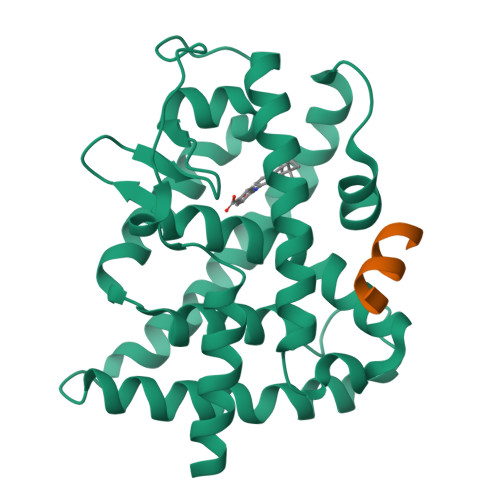A unique secondary-structure switch controls constitutive gene repression by retinoic acid receptor.
le Maire, A., Teyssier, C., Erb, C., Grimaldi, M., Alvarez, S., de Lera, A.R., Balaguer, P., Gronemeyer, H., Royer, C.A., Germain, P., Bourguet, W.(2010) Nat Struct Mol Biol 17: 801-807
- PubMed: 20543827
- DOI: https://doi.org/10.1038/nsmb.1855
- Primary Citation of Related Structures:
3KMR, 3KMZ - PubMed Abstract:
In the absence of ligand, some nuclear receptors, including retinoic acid receptor (RAR), act as transcriptional repressors by recruiting corepressor complexes to target genes. This constitutive repression is crucial in metazoan reproduction, development and homeostasis. However, its specific molecular determinants had remained obscure. Using structural, biochemical and cell-based assays, we show that the basal repressive activity of RAR is conferred by an extended beta-strand that forms an antiparallel beta-sheet with specific corepressor residues. Agonist binding induces a beta-strand-to-alpha-helix transition that allows for helix H11 formation, which in turn provokes corepressor release, repositioning of helix H12 and coactivator recruitment. Several lines of evidence suggest that this structural switch could be implicated in the intrinsic repressor function of other nuclear receptors. Finally, we report on the molecular mechanism by which inverse agonists strengthen corepressor interaction and enhance gene silencing by RAR.
Organizational Affiliation:
Institut National de la Santé et de la Recherche Médicale, U554, Montpellier, France.




















